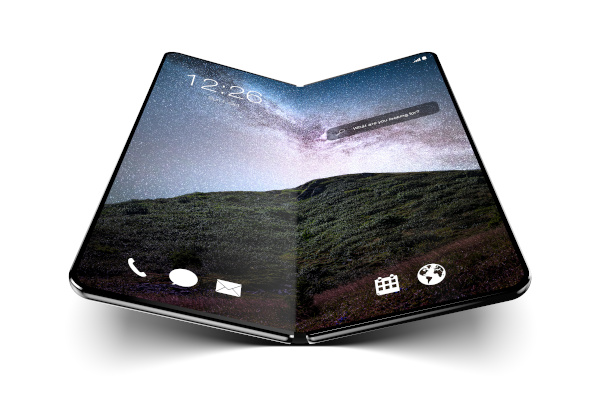Flexible Screens With OLED Technology
Flexible OLED display panels are manufactured on a flexible foundation made from a durable material like plastic, metal or even flexible glass. Phones with a flexible display are be lighter, thinner and possess more screen durability due to OLED technology.
Flexible phones can now even be bendable by users. The first smartphone with a curved display launched in South Korea 2013 . The success of this format has been expanded and now the majority of manufacturers are also producing smart phones with flexible displays. AMOLED technology is now becoming increasingly more widely used in the phone market. AMOLED is an advancement of OLED technology, it allows for improved brightness and greater energy efficiency.
Mobile phones are not the only consumer electronics benefiting from OLED technology; televisions, lighting fixtures, VR headsets and even smart watches will all be implementing OLED technology to future models. Some of the challenges involve finding a backplane that is as durable as the screens and finding surface barriers that keep the screen’s OLEDS firmly in place.
Wearable devices such as smart watches and fitness trackers have also adopted OLED technology as the flexibility of display screens provide more opportunity for designers and these displays have a relatively low power consumption.
OLED lighting is also a developing market, OLED technology produces high quality and energy efficient lighting panels, however due to high production costs it is unlikely to successfully challenge LED lighting in the near future. As a result of the challenges around mass production the technology is currently more niche and high end. High end car manufacturers have started to integrate OLED into their models, firstly as higher spec options but increasingly as standard within their model ranges.
In 2022 QD-OLED will be launched in televisions, it uses quantum dots with organic light-emitting diodes to give an even better picture quality. This is a step forward and a change from the current OLED screens which includes improved brightness levels, improved color volume and reduced response times (important for those who enjoy gaming).
With these challenges, being able to accurately test the resilience and the thickness of these barriers will become essential to electronics manufacturers. Additional testing for light reflectance, ambient light and OLED systems will also be at the very forefront of lighting technology research for the next few years. Konica Minolta has a number of instruments that can accomplish such measurements quickly and accurately. Contact us today to learn more!
To accomplish quick and accurate measurements, the following products are recommended:
- CA-410 Display Color Analyzer – The CA-410 has enhanced-accuracy & repeatability with high-speed that is capable of measuring a wider range of the latest displays.
- CS-200 Color and Luminance Meter – This model measures luminance and chromaticity with high accuracy. It is user friendly and a great value option.
- CS-3000 Spectroradiometer – The CS-3000 is a highly accurate spectroradiometer with the ability to measure ultra low luminances.
Read more about both our light and color measurement products for the display industry in our dedicated industry guide.











